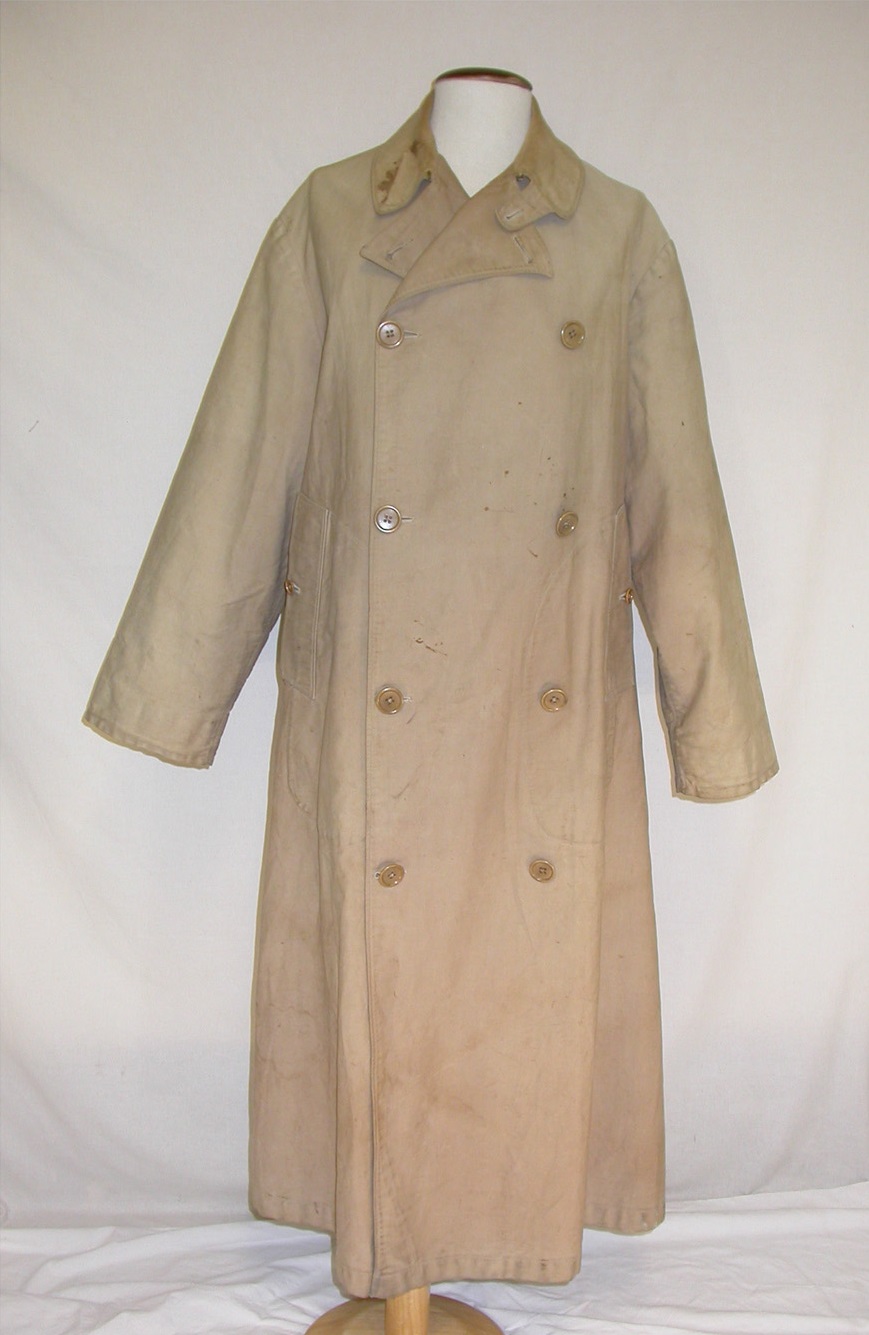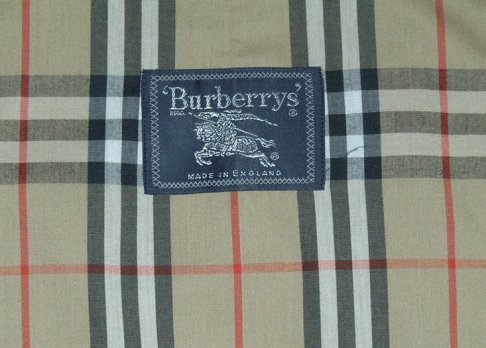
Hampshire’s archival collections of Burberry material date from the 19th century, with billheads, advertisements, and packaging. From the Edwardian period there is memorabilia from the fire that occurred at the Winchester Street premises in Basingstoke in 1905, and four smocks that were remaindered shop stock in 1909. There is a full-length Edwardian raincoat, currently on display at the Willis Museum, Basingstoke, alongside a 1920s example.
The smocks may signal one of the keys to Burberry’s success: an understanding of the need for durable protective outerwear, which would replace the outmoded smock, but from which smock design and materials the company learnt valuable lessons. In 1896 there was a patent approved, for a coat, put on over the head, for farmers and sportsmen. The twill weave of smocks, combined with Burberrys’ proofing of the yarn before and after manufacture, led to a garment which Edward VII was pleased to adopt in preference to his previous favourite, the Aquascutum.
The local Hampshire story of Burberry centres on Basingstoke. Two sisters Ada and Annie Attwood taught seamstresses at Burberrys between the wars (1918-39). Whereas today raincoats are produced on a production line, each person having a small part in each garment, in the 1920s a single person made a whole garment.
Gradually Burberrys became a national concern with an international clientele. It became known worldwide for the quality of its materials. Fine Egyptian cotton was woven at 400 threads to an inch instead of the standard 200. From around 1905 its silk linings were remarked upon. Whitchurch Silk Mill had a family connection with the Burberry family through the marriage of one of Burberry’s daughters into the Hide family who owned the mill, and the mill apparently wove Burberry silk linings for coats in the early 20th century. Everything bore a brandname: The Burberry ‘Prorsum’ label appeared in 1909, its use of the Latin word for ‘Forward’ suggesting Thomas Burberry’s huge self-confidence and an early understanding of his lasting legacy. The name of ‘Burberry’ was marked on everything from shoetrees to buttons, examples of which pepper the collections.
An exhibition by Burberrys London in 1991 which toured to Scotland exhibited items from Hampshire’s collection alongside those of the company archive. More recently, the company donated a 1920s raincoat and a reproduction Shackleton suit from the film of that name to the collection.
1856-1890
In 1856 a young 21 year old entrepreneur, Thomas Burberry, set up a draper’s shop in Winchester Street, Basingstoke.
His clientele was three fold: the local market town population who traditionally made their own clothes but who were beginning to explore ready-to-wear options, the rural agricultural community who required durable outerwear, and increasingly, gentlemen with large country estates in and around Hampshire who had ample leisure time for sporting pursuits.
Thomas Burberry held a full range of draper’s stock, as evidenced in local newspaper advertisements. In 1879 he patented a waterproof material, gabardine (sic), a garment not made with rubber like its rival the macintosh (the ‘Burberry mac’ is a tautology) but of a breathable fabric that repelled water due to its fine threads and sophisticated method of weaving and proofing.
This breathable fabric linked the name of Burberry with the health culture movement of the 1880s, and was clearly such a successful venture that by 1891 Thomas Burberry had established a retail outlet in London, while retaining Basingstoke as his base of operations.
1890-1914
In the period c1890 -1914 the company supplied utilitarian clothing for school children, boy scouts, and Boer War army personnel.
Their sporting range went from strength to strength in this period, embracing the ‘hunting, shooting, fishing ’ fraternity, as well as supplying weatherproofs for walkers, golfers and riders, motorists and travellers.
The fabric of the garments proved a match not only for rain and wind, but also for thorns and fish hooks. Women’s outerwear lines were expanded, and ladies’ hats with gamefeathers were a charming sideline.
Antarctic Explorers like Mallory and Shackleton attested to the quality of the weatherproofing of their garments and tents.
The Oates Museum at Selborne holds Burberry items belonging to Captain Oates. Burberrys went on to secure an order for the supply of some 500,000 weatherproof ‘trench’ coats for the services in World War One, many of which were produced in a factory standing on an area just below what is now Staple Gardens in Winchester.
He had already held premises in elsewhere in Winchester in the mid Victorian era, and also in Mill Lane, Reading in Berkshire just a few miles north of the Hampshire border.
1918-1939
In the interwar period 1918-39 Burberrys appear to have continued with their local Basingstoke drapers’ business while courting the luxury end of market for outerwear and accessories, and textiles for warmth and comfort.

Advertisements for the ‘Basingstoke emporium’ in the 1920s describe ‘down quilts’, ‘corsets’, ‘tweed coats’, ‘cashmere hose’, and other ‘luxury’ goods.
Medium to light coloured materials in grey, beige and khaki were favoured, and checked linings were embraced, including but by no means centring on the now classic beige, black and red version.
Indeed the variety of designs and colours of checked linings in surviving raincoats in Hampshire Museums Service collection is quite remarkable. There are also holdings of Burberry military issue at Aldershot Military Museum.


